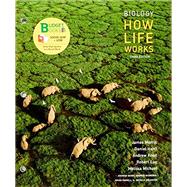Biology: How Life Works was written in response to recent and exciting changes in biology, education, and technology with the goal of helping students to think like biologists. The connected resources of text, visual program, and assessments were developed together to provide students with the best resources to gain a modern understanding of biology.
Content is selected carefully, is integrated to illustrate the connections between concepts, and follows six themes that are crucial to biology: the scientific method, chemical and physical principles, cells, evolution, ecological systems, and human impact.
The third edition continues this approach, and expands upon it by making both the text and media more flexible for instructors and easier to implement. New scientific skills-focused content gives students the tools they need to continue through a life sciences curriculum. Major content revisions in the coverage of DNA Structure and Function, Animal Form and Function, and a complete reorganization of our Ecology coverage streamline the content and make for a more flexible teaching experience.
The third edition also delivers great improvements to the media and assessment programs. Improved diversity of assessments (more diversity of Bloom’s level, new item types, and new tutorials) and improved data analytics to allow for more insight into students learning. The Visual Syntheses have been reimagined, creating simpler and more powerful tools to help students see connections between topics.
The third edition of How Life Works is now an even more connected set of resources to provide students with the best set of tools to connect how life works and to succeed in introductory biology and beyond.








